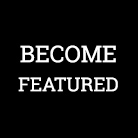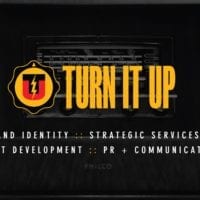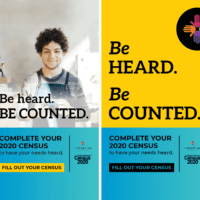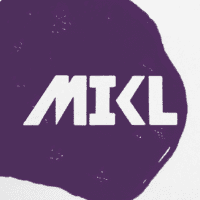Stop Emailing Creative Directors
By / /
By Creative Director Norm Shearer
As adjunct teacher at CU Boulder and Cactus CD, I’m often asked to do informational interviews. I’m happy to do them when I can. I like giving young creatives feedback and helping them out, even when we aren’t hiring. Plus, I like to meet new people and stay connected to what’s going on. I have reviewed portfolios in the classroom, online and in every imaginable plastic, metal or leather case known to man. I’ve seen the good, the bad, and the ugly. And, I have a few thoughts to pass along to young, passionate creatives looking to break into the industry during one of the most competitive times I’ve seen.
Don’t email your portfolio. We get hundreds of emails a week from job-seekers. When you use email as an ice breaker, you become one of the masses. Custom mini-books, thumbnail samples, interesting snail-mailed items break through the clutter better. When I was out of school, I once mailed a post-card-sized chunk of dry wall to a CD. I hand-wrote something witty about “breaking” through. Maybe cliché. But, it was unique and customized to the person I wanted to reach. He called me back right away. Your first impression needs to be thought through and relevant, not just gimmicky.
Be pleasantly persistent. If you make a connection with someone and get a good vibe, follow up with them. Stay in touch in a cool way that’s not bothersome, but interesting. I used to send handmade postcards about once a month. Sometimes they’d feature my own work, or sometimes they were more obtuse and artistic. But they helped me stay in touch and top-of-mind.
Ask for advice in every interview, but don’t overreact to suggestions. While you should heed experts’ advice, ultimately you are representing yourself and you have to believe in your own portfolio. Don’t be afraid to express what makes you unique in your portfolio or in an interview. People want to hire individuals who have life experiences and not just a great book. That said, execution is everything in a great book. Keep it simple, but give it a point of view or personal touch to stand out. Everyone who I have hired at Cactus has shown me a few samples of their personal work from travel photography to blog writing, and videos to fine art. The balance is to know when to show it in an interview and how much of it to show. Keep the focus on your portfolio.
Only show your best work. It’s better to show fewer great pieces than a ton of crap. And you know what the crap is. A friend and previous boss who has taught me a ton, Mike Sukle, once said of a photographer’s book, “Look at his worst work in his book, and ask yourself, ‘Would I be happy if that’s what he delivered on this project?’” That’s great advice for any book.
Before your interview, check out the firm’s work and know who you are interviewing with. This may seem like a no-brainer, but I can’t tell you how many blank stares and B.S. responses I get from people when I ask, “So, what work do you like that I/we have done?”
Don’t interview somewhere you don’t want to work. It’s not fair to the interviewer or yourself. However, Mark Fenske used to tell me about all the crappy places he worked and all the crappy assignments he worked on before he broke through to work for bigger, more notable places. Each individual needs to determine their own path and gain their own momentum, but just make sure you have an exit plan if you start somewhere as a stepping stone.
Portfolios aren’t just for creatives. At Cactus, we require everyone to show us a portfolio of their previous work. Many places don’t require or even think to ask this of non-creative position applicants. So if you walk in as a media buyer, planner or AE armed with a few killer samples and present them really well, you could land yourself on the short list.
Anyway, just thought I’d share a few thoughts during a time when every trick to get a foot in the door helps. Good luck, everyone. And I look forward to not getting your emails.
Norm Shearer is Creative Director at Cactus, a Denver advertising agency.






Comments
anthony castellano April 30, 2009
This is pretty sound advice
This is pretty sound advice for even the more, er seasoned pros. Sometimes we can all get a bit lazy.
Ross C April 30, 2009
Someone dropped off a pinata
Someone dropped off a pinata made out of their resume. It definitely got some attention.
paul suggett April 30, 2009
Great advice Norm. I’ll email
Great advice Norm. I’ll email you later to talk more about this.
Capt. Kerning April 30, 2009
I totally agree with bringing
I totally agree with bringing only your A Game. But I do think many creatives, especially many who are scratching and clawing for jobs, are tempted and will toss everything into the pot to appease someone looking to handle a specific account.
Example: Say you want to work at Hot, Up & Coming Advertising and they have this great bank client. You have a breadth of fantastic award-winning work, but no bank. The temptress Mediocrity encourages you to put in your half-assed effort for promoting a Tweety Bird ATM card. In some cases, the great work gets overlooked for this bank stuff because the CD (with clients and agency breathing down her neck to hire someone with financial experience) feels compelled to get this person. Is this right? Not in my book. Could it get this creative a job? Maybe. And that’s a big allure in these trying times.
Is less more? Let’s take this conversation further.
josh mishell April 30, 2009
perhaps my emailing with a
perhaps my emailing with a link to my portfolio all those times the last 8 years is why i never got an interview at cactus! actually, norm was always polite as to why he didn’t think my book was strong enough, and i always appreciated those comments.
whenever i look for jobs, i like to treat the project as a business project. develop a campaign for yourself. brainstorm 25 ideas and work on a few, pick the strongest and run with it.
and even though norm said don’t interview where you wouldn’t want to work, i think it’s fun to treat those “less than stellar” opportunities as a place to try out new material, a different interviewing angle.
Norm Shearer April 30, 2009
There are always exceptions
There are always exceptions to the rules. And I dare not say my mere advice should be taken as rules. These were all just more observations and advice angled toward jr’s. Things change as you gain experience and you can adjust and bend things as necessary. Captain Kerning and Josh, you make very good points. In the end people just have to be honest with themselves and adjust their portfolio and interviewing tricks accordingly.
I thought I read once that Steven Spielberg started in the mailroom. True or not, I think the point was that we all make the best of our opportunities and use the experiences we gain along the way to learn from and grow.
Bwell April 30, 2009
Way good article Norm. Much
Way good article Norm. Much appreciated insight!
Account Guy April 30, 2009
Great points and great read.
Great points and great read. I am an account person and I have created my own portfolio, hand built books and many different customized leave-behinds of my portfolio to stand out. The only problem was most account directors never caught on and thought I was trying to get into the creative department. No wonder creative teams get frustrated with the account side counterparts.
Brian Suter April 30, 2009
Norm, this threw me a
Norm, this threw me a curveball! As a jr, I’ve always thought that handing/mailing in something tangible was the best way to get noticed – until I was told by many to do otherwise. Most creatives I’ve asked this question to have said that PDF files are actually better; they can be forwarded around the agency/firm, printed, and written on. Whereas something tangible (like a book) has the potential to be handled by everyone; becoming bent, greased up by fingerprints, and potentially never even reaching those who do the hiring.
I’ve always questioned who’s right and who’s wrong when it comes to e-mailing a PDF or actually presenting something tangible. My “conclusion” still stands that it depends on the firm and it’s size. But even after researching a company that is presenting a potential job opportunity, it’s pretty easy to second guess myself in what option would be best.
Thanks for the write-up – it’s more than food for thought.
Jonathan Patterson May 1, 2009
Looking for a job is a job in
Looking for a job is a job in and of itself. Employers want to know you want to work for them, and that you didn’t take anything you could get.
Norm Shearer May 1, 2009
Brian, you raise and
Brian, you raise and interesting distinction. Places looking to hire vs. places not hiring. I think the difference in approach lies in the seeker correctly determining whether an agency is looking vs. not looking to hire. When we have a specific opening posted at Cactus we have asked for people to email their samples to us. But still, those that do something that stands out in a cool and relevant way to accompany or follow up on the email helps their chances of getting that first interview.
On the flip side, and this is more what I was getting at in my advice, if there is a Sr. creative or CD who you want to get your book in front of (and they don’t appear to be actively hiring) you will most likely need to come up with an interesting tactic or idea to get their attention other than a cold email.
Jamie May 1, 2009
Great advice. I hope no one
Great advice. I hope no one else reads this article 😉
Poopie May 2, 2009
Brian screw your head on you
Brian screw your head on you a-hole.
Brian Brooks May 2, 2009
Yea – I think how you get in
Yea – I think how you get in the door varies agency to agency – a lot is NOT if your portfolio is printed, a pdf, a website, or drawn on a piece of toast – but a lot of luck.
It also helps if you know someone at the agency (actually that’s a BIG help) … instead of just throwing your work in the pile and hoping it gets to the top – trying to make contact with someone who you might know through a mutual friend might be well worth it. That way you can get an honest answer on how the agency works, if the people are awesome or jerks …and most of all – who the decision makers are.
…oh yea, and it helps if your work is good 🙂
Andrea May 4, 2009
Way to look like a jackass
Way to look like a jackass Brian. Not sure how you would confuse him with someone else, as his name and agency are all over this article. Maybe you need to focus on attention to detail. And yea, Norm rocks.
Keleigh Asbury May 20, 2009
My biggest piece of advice to
My biggest piece of advice to compliment this position is to BUILD YOUR PERSONAL NETWORK! Anyone who sits back and just emails out their resume and portfolio all day long will consistently disappointed. Every professional creative I have met seems to touch on this time after time. For the people who are social butterflies and have solid work to go along with it, I could sell their talent ten times over.
john May 21, 2009
Your name is Norm.
Your name is Norm.
Rick Rosenberg May 26, 2009
count me as another cd who
count me as another cd who agrees with everything norm said. with the influence of cactus, sukle, cpb, it’s getting more and more competitive in this market. and that’s good! it’s not about the font you choose or the cute little squiggly flourish underneath it, it’s about ideas that generate an emotional response. know as much about bill bernbach as al hitchcock. as miles davis. as monet. as twitter. ideas, people. have them.
Brian W. June 2, 2009
interesting. i never read
interesting. i never read this cuz i saw norm post this on blogo de cacti.
looks like denver could use some sort of ask jancy column.